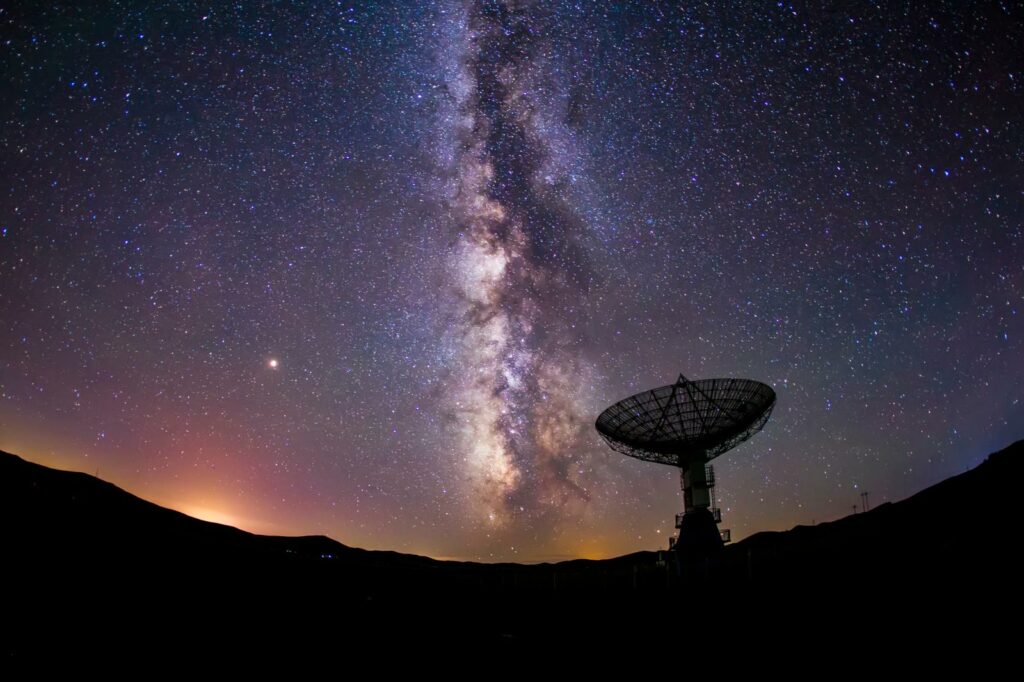
A new paper from a group of astronomers and engineers has suggested creating Radio Dynamic Zones, where organisations could test out their radio transmitting equipment to see how it might affect astronomical observations.
While there are protections around radio telescope facilities to create ‘radio quiet zones’, these do not extend to orbit, and the advent of megaconstellations – networks of thousands of satellites providing global telecommunications and internet connectivity – has vastly increased the number of satellites being launched.
SpaceX’s broadband internet network, Starlink, already has thousands of satellites in orbit, and in March UK-based OneWeb launched the final batch of its 618-satellite network. Amazon has also announced it will move ahead with its own Project Kuiper broadband network of 3,200 satellites, starting the launch phase in early 2024. These networks, by design, cover the entire globe, meaning no area on Earth would be free from their interference.
To remedy this, the paper proposes creating special zones which have the same protections from outside radio transmissions as quiet zones, but would be outfitted with monitors. Astronomers, satellite manufacturers and other technology developers could then use the areas to test their receivers and transmitters at large scales, ensuring they do not unknowingly encroach on astronomical observations. cps.iau.org